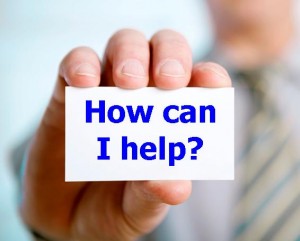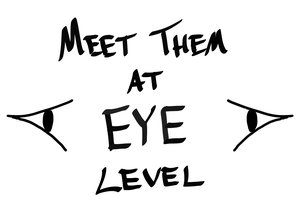"Why is it when I ask my senior leaders "How can I help?" I rarely get a response I can do anything with? People seem to struggle for an answer when I know they are overloaded and desperately need help. I don't get it. What am I missing?"
During a recent coaching session, the CEO of a mid-sized manufacturing company shared these frustrations with me. This man cares deeply for his team and company. He is concerned about what his people need, and wants to empower them with the right resources to be successful. He wants to help!
Every one of his intentions are good. Yet he's probably asking too much of his people - without realizing it.
What's actually needed to answer "How can I help?"
The person being asked "How can I help?" needs to know the answers for each of these steps:
Diagnosis - What is the problem or challenge I'm really facing?
Prescription - What would help most, given this diagnosis?
Fulfillment - How can I get the resources to fill my prescription?
Vulnerability - What help can I specifically ask from you - that you wouldn't see as my problem or weakness?
For the asker, it's easy to assume away these steps - all of which need the right answers to get the right kind of help. Yet there are many ways for the answerer to be wrong: misdiagnose the real challenge and get the wrong solution; choose the wrong prescription and suffer a bad reaction; select something the asker can't or won't do and come to a dead end; and/or hit a nerve with the asker that reinforces to both people that the person struggling is not up to the job.
With all these ways to be wrong, many people don't get help that's actually helpful.
An alternative: Meet them at eye level
To be a more effective leader, try questions like the following:
Diagnosis - "Where are you hitting roadblocks? What challenges are you facing?"
Prescription - "What options do you think you have? What would be most effective?"
Fulfillment - "How do you think we could do that? What resources could we use?"
Vulnerability - "So based on what we know, here are a couple things I could do. Which would be most helpful to you?"
By meeting the person where they are in the process, you can help them get unstuck and move to the next level. By the time you reach the last step, the options should be clear to both of you, and you can help the person in a way that is truly helpful. Another benefit is that the success or failure is shared by both people, rather than falling on you for supplying the solution or to the responder for picking the right or wrong answer.
If this concept is still a little fuzzy, allow me to use one more example: If you've ever lost someone close to you, or known someone who has, you know that the most common and least helpful question is - yep, you guessed it - "How can I help?" Of course it's asked with kindness and caring, yet when a person is emotionally overwhelmed it's something they often simply are unable to answer. Asking questions in the second list are much more helpful to both of you to find out where you might help. And if someone is completely overloaded, the most effective question can be to provide a simple choice of support - "Would you like me to wash the dishes, or sit by you and hold your hand?"
If you realize that up to now you've been asking less-than-helpful questions, there's no better time to turn it around!
Now, how can I help...um...where might you find yourself challenged by this? Connect with us if doing some diagnosis together might be helpful.
PS Meet them at eye level is one of the practices we use with executive coaching and is also in my book, Ripple: A Field Manual for Leadership That Works.




